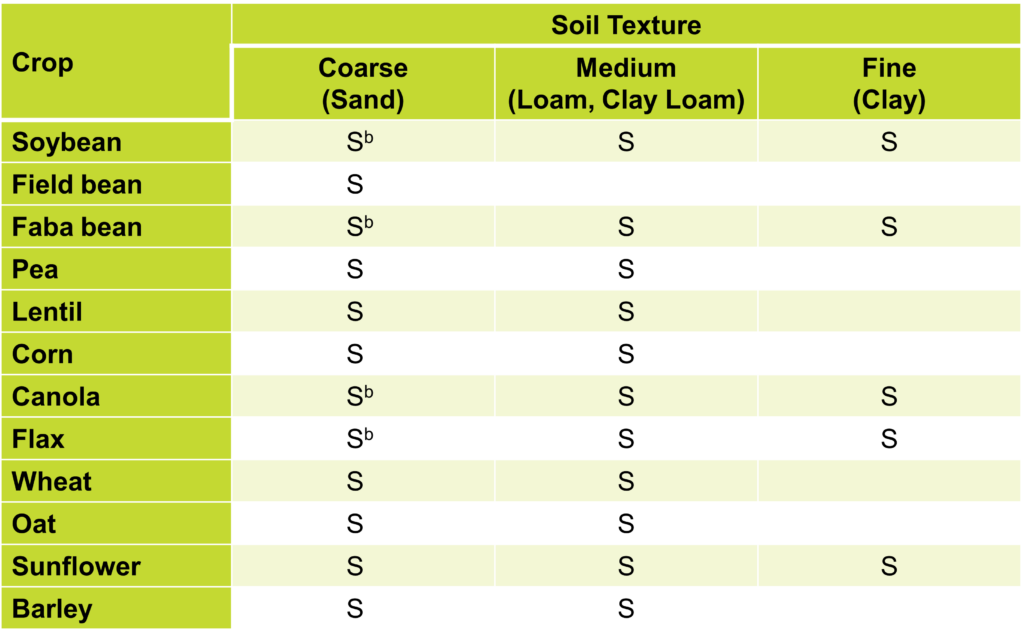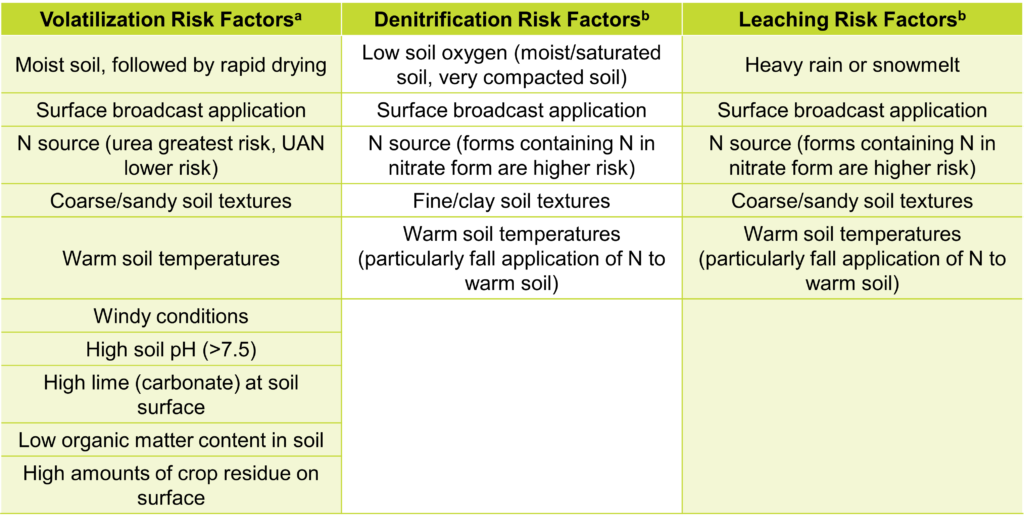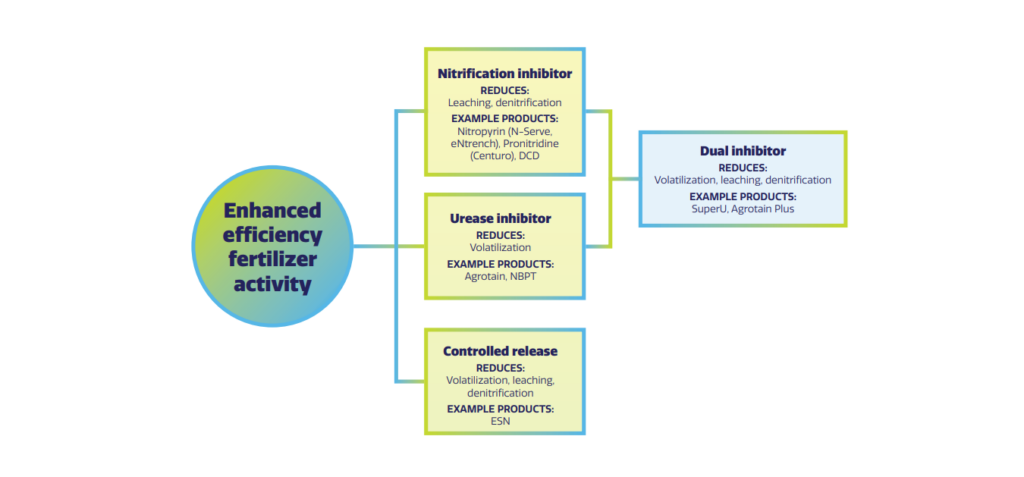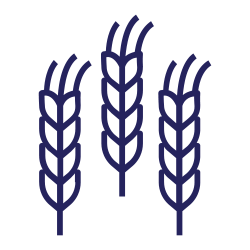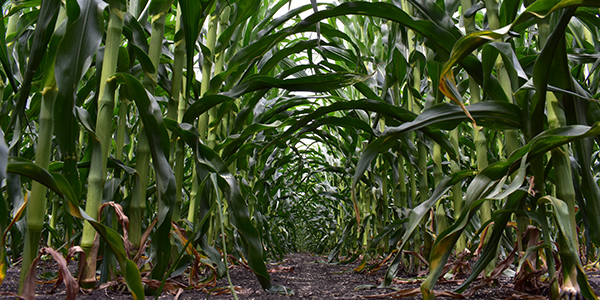Section Title
Managing Extremes of Moisture Part 2: Crop Selection, Pests and Fertility
- Whole Farm
This is Part 2 of a three-part series on managing extremes of moisture. Part 1 focuses on soil properties and definitions. If you haven’t already, we recommend reading Part 1 first. Part 3 focuses on field activities.
To cope with drought and excess moisture, it is helpful to view the cropping system as a whole – from crop selection and pest management to fertility practices, and how those impact the soil. Even the most drought tolerant cropping system requires some water, and we can only do so much to mitigate flooding, however, increasing the resiliency of our cropping system can have substantial benefits.
Crop Selection - Annual Crop Choices
While crop selection can only go so far to manage extremes of moisture, some crops are more tolerant than others. Consider the following:
- Season length and fall planted crops: Longer season crops tend to use more moisture compared to shorter season crops, and fall seeded crops tend to use water more efficiently than spring seeded crops (ie. winter wheat uses more water than spring wheat, and can make use of early season moisture). Fall seeded crops also avoid the risk poor field trafficability at spring planting.
- Perennial crops: Similar to long-season annual crops, perennial crops use soil moisture earlier in the spring and later in the fall compared to annual crops.
- Oilseeds vs. cereals: Oilseeds tend to have greater water requirements than cereals.
- Cereal crops: In cereal crops, oats tend to be more tolerant of water than wheat, followed by barley. The reverse tends to be true in the case of drought tolerance. More information on wheat and barley crop water use can be found here.
- Pulse crops: In pulse crops, faba beans tend to be more tolerant of water than soybeans, followed by field beans and then peas. Again, the reverse would be true for drought tolerance.
Table 1: Relative crop suitability under imperfectly draineda conditions, summarized by soil texture. (Source: Bedard-Haughn (2009))
aFor more information on soil drainage classes, descriptions can be found here.
bSuitable in wet years, moisture challenges in dry years.
Crop Selection - Rotational Crop Choices
The sequence of crops in a rotation also affects soil moisture, and can be a tool used for water management. Consider the following:
- Crop rooting depth: Rotating deep- and shallow-rooted crops maximizes moisture use throughout the soil profile. Deep-rooted crops can make use of soil moisture low in the soil profile left unused by shallow-rooted crops, while shallow-rooted crops can make use of surface moisture recharge from precipitation after deep-rooted crops. For example, research in south western Saskatchewan observed that in dry years, wheat yield was greatest on pea stubble, intermediate on lentil, mustard or wheat stubble, and lowest on chickpea stubble. Researchers were able to attribute this difference to soil water use by the wheat crop (Miller et al, 2003).
Table 2: Relative rooting depths of various crops. Crops within each category have similar (not equal) rooting depths. (Source: Saskatchewan Ministry of Agriculture).
- Crop residue: Crop residue and stubble are effective at trapping snow and reducing moisture loss via evaporation. High residue crops (especially if straw is not or cannot be removed) can be helpful or a hinderance, depending on your specific conditions. Crop residue also contributes to soil organic matter, and therefore can increase water holding capacity, infiltration, and maintenance of soil structure.
Crop Selection - Variety Choice
In most cases, the type of crop you choose will have a larger impact on water or drought tolerance than the variety you choose. Recent Manitoba research on canola and wheat has shown little varietal differences for drought and flood tolerance. The modern varieties that perform best under non-stressed conditions also tend to perform well under moisture stressed conditions (Manitoba Diversification Centres; Cavers, 2024).
However, some varietal characteristics can be considered:
- Short vs. long season variety: In situations where excess moisture early in the season is a challenge, choosing an earlier maturing variety may be necessary.
- Disease resistance/tolerance: There are many crop diseases that are associated with excess moisture conditions. When available, choosing a variety that has disease resistance can prevent additional yield loss. Variety disease ratings can be found in Seed Manitoba.
- Biomass or plant height: Plant height can impact the amount of crop residue or straw produced, and therefore impact soil moisture conditions as discussed above.
Crop Selection -Intercrop, Cover Crop and Relay Crop Options
Cover cropping, intercropping and relay cropping can all have implications with respect to moisture management. For the purposes of this discussion, we will focus on cover cropping. For more information on intercropping, NDSU has a helpful publication. For information on a winter wheat-soybean relay crop system see this article from Manitoba Pulse and Soybean Growers.
Cover crops are grown for the purpose of covering the soil when it would otherwise have been left bare. They can be grown in the fall and spring between cash crops, or throughout the entire growing season. Cover cropping is a relatively new practice to western Canada, and while our environment may provide some limitations, there are also potential agronomic benefits (including moisture management). Consider the following:
- Protection from erosion: Maintaining ground cover can provide protection from erosion that would otherwise remove valuable topsoil. This topsoil is often high in organic matter, and is therefore an important component of maintaining soil structure and water holding capacity.
- Snow capture: In cases where little crop residue remains after harvest, fall-established cover crops can be an effective way of capturing snow over the winter, and can reduce surface runoff to ensure the moisture remains on the field at snowmelt.
- Utilize excess moisture: In cases where excess moisture is a challenge, cover crops can use up soil moisture and increase trafficability early in the season. Under dry conditions, cover crop establishment can be difficult, and the timing of termination should be carefully considered. Researchers at the University of Manitoba have found that termination timing of fall rye can be managed based on soil moisture concerns.
- Increase soil organic matter: By building soil organic matter, cover crops can increase soil water holding capacity and improve soil structure. An improvement in soil structure will also increase infiltration of water into the soil.
If you’re interested to learn how cover crops could be a fit on your farm, Virginia Janzen and Dr. Yvonne Lawley at the University of Manitoba have developed a useful planning guide, which has been published by the Seine Rat Roseau Watershed District.
Pests
Even under ideal moisture conditions, pests are challenging. Under excess moisture or drought conditions, however, extra consideration must be paid, and the choices made regarding pest control can be important in building future resiliency:
- Weeds: Weeds compete with the crop for valuable water during drought conditions. Special consideration must be made when conditions are hot and dry, however, since herbicide performance and crop tolerance are impacted. More information on those considerations can be found from Manitoba Agriculture, here. Weed control under wet conditions can be equally challenging, however. Find more information from Manitoba Agriculture on weed control under wet conditions here.
- Insects and disease: While insects and diseases may not directly affect soil moisture conditions, moisture conditions can certainly affect insect and disease pressure. Solid insect and disease management plans are critical to maintaining yield when moisture conditions are challenging.
Fertility
Soil moisture levels have a significant effect on the risk of nitrogen loss through leaching, denitrification, or volatilization (Table 3). Knowledge of your risk factors, including potential moisture conditions, can be crucial in selecting the most suitable practices for your farm. This may include the use of enhanced efficiency fertilizer products (Figure 1), or a variety of other 4R Nutrient Stewardship practices.
Table 3: Nitrogen loss risk factors.
aSource: Manitoba Agriculture
bSource: John Heard, Manitoba Agriculture
A challenge, however, is the ability to forecast soil moisture conditions, and how that may impact the N management strategies used. This can be particularly challenging when applying nitrogen fertilizer in the fall. Recent Manitoba research analyzed fall precipitation data between 1961 and 2012 at sixty-six locations in Manitoba. Using this data, decision support tables were developed to help assess and manage potential risks associated with fall fertilizer management under conditions of excess moisture. The full project report is available here, with the nitrogen risk tables found on page 14.
Crop selections, pest management and soil fertility are only part of the cropping system. Field activities including tillage, residue management and drainage also impact moisture management, and therefore the resiliency of our cropping system to moisture extremes. This is the focus of Part 3 of our series on managing extremes of moisture.
References
- Bedard-Haughn, A. 2009. Managing excess water in Canadian prairie soils: A review. Can. J. Soil Sci. 89: 157-168. Available from: https://cdnsciencepub.com/doi/10.4141/CJSS07071
- Cavers, C. 2024. Stress-Testing Crop Varieties Against Extremes in Soil Moisture [PowerPoint presentation]. CropConnect Conference. Winnipeg, MB, Canada.
- Heard, J. Wet Soils Influence Soil Fertility. Manitoba Agriculture. Available from: https://www.gov.mb.ca/agriculture/crops/soil-fertility/wet-soils-influence-soil-fertility.html
- Manitoba Agriculture. Volatilization of Surface Applied Urea/UAN. Available from: volatilization-surface-applied-urea.pdf (gov.mb.ca)
- Manitoba Diversification Centres. Excess Moisture Effects on the Growth and Yield of Spring Wheat. Available from: https://mbdiversificationcentres.ca/reports/excess-moisture-effects-on-the-growth-yield-of-spring-wheat/
- Miller, P.R., Gan, Y., McConkey, B.G. and McDonald, C.L. 2003. Pulse Crops for the Northern Great Plains: II. Cropping Sequence Effects on Cereal, Oilseed and Pulse Crops. Agron. J. 95:980-986. Available from: https://www.researchgate.net/profile/Yantai-Gan/publication/260751401_Pulse_crops_for_the_Northern_Great_Plains_I_Grain_productivity_and_residual_effects_on_soil_water_and_nitrogen/links/5ac2503c0f7e9bfc045f29f9/Pulse-crops-for-the-Northern-Great-Plains-I-Grain-productivity-and-residual-effects-on-soil-water-and-nitrogen.pdf
- Saskatchewan Ministry of Agriculture. Mustard. Available from: https://www.saskatchewan.ca/business/agriculture-natural-resources-and-industry/agribusiness-farmers-and-ranchers/crops-and-irrigation/field-crops/oilseeds/mustard

